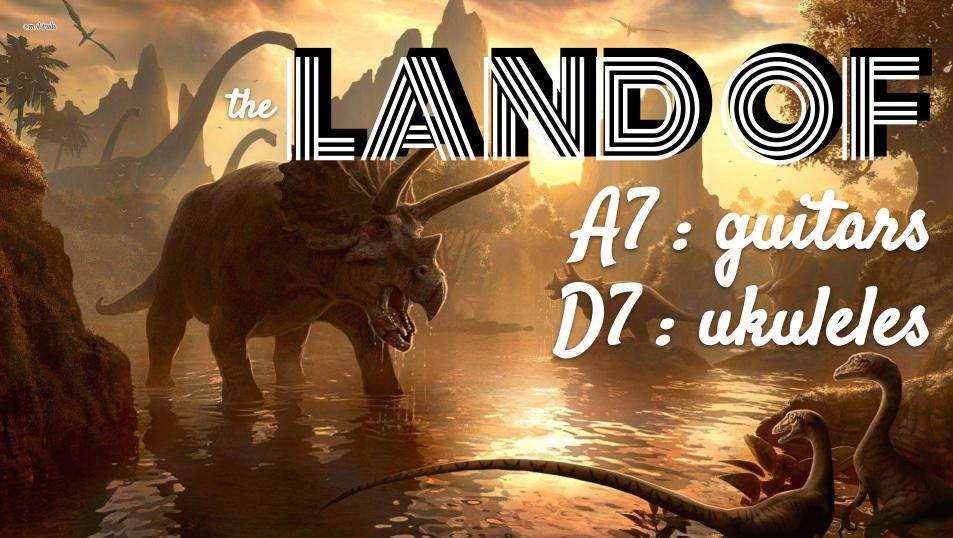Strumming Workshop - The Recap
- Jon Wheeler
- Mar 2, 2024
- 4 min read
A few weeks back I was invited to run a guitar workshop for one of our local guitar groups. The theme was ‘strumming’ - essentially how to break out of the trap that a lot of enthusiast players fall into, using one strum pattern (and sometimes speed) for literally every song they play. The result is pretty inevitable, all songs start to sound the same.
This is going to be a bit of a recap about what we did, and some of the ideas we discussed, with some little videos at the end to help you out. If this is a problem you recognise in your own playing, even if you know a few different strum patterns, there might be something here you find helpful.
Recognise your playing situation
The first thing to point out is that the approach you choose can depend on the circumstances in which you’re playing. Group playing, i.e. where you’re in a large group, all trying to strum along with each other, can often benefit from a simpler, more powerful pattern. Whereas individual performances, or finding your place in an organised band situation, can require more subtlety.
Whatever the situation, the best results are always got by actively listening to what everybody else is playing, and trying to fit with that. You want to complement and augment the song whenever you can….add interest. At the workshop we discussed dynamics….how varying your strumming style can help a song build, or add and release tension. It’s a bit like talking. Imagine a person talking in a monotone, no variation in pitch, no pauses, no changes in volume…..sounds boring, yeah? (Bueller, Bueller......) Strumming can be pretty similar, no variation can equal no interest.
Without further ado then, here’s some quick videos showing some of the patterns and techniques we talked about on the day. In every example, I'm always just strumming on the standard, open E major chord. If you’ve got any questions or comments, please feel free to send them in - I’ll do my best to answer, regardless of whether you were at the workshop or not.
Example #1
If you're playing a song that's in a 4/4 time signature, i.e. 4 beats to the bar, think about splitting those 4 beats into 8 half beats, where your downward strum is a 'whole' beat and your up-strum is the half that exists between the two.
This example starts off as 1,2,3,4&, so four downward strums followed, or punctuated by, an up-strum at the end. Then try adding more up-strums to the mix, between 3 and 4, between 2 and 3 until you go the full 1&2&3&4&. You're not playing any faster, but varying and alternating between these within a song adds interest. Perhaps try the simplest version for a verse and a more intense version for a chorus? Be careful with the 1&2&3&4& version though, because it in itself has no variation and can get monotonous if used too much. At the end of the video example I mix a few of the options together.
Example #2
I call this one 'Old Faithful'. I don't really know why, but you can make it fit loads of different genres and speeds, and it's got a good, off kilter mix of up and down strums. If you reference it back to the first examples, you omit the up-strum between 1 and 2, and the third down-strum. Notice all the time my strumming hand is in regular motion, just like example 1, even when I'm not making contact with the strings. It's important in maintaining your rhythm.
Example #3
Realistically though, there are literally loads of variations you can try, but variation is definitely the key. This video has some of the other types I regularly use.
In the first one I substitute an individual bass note (the root note, E) for the first downward strum of 'Old Faithful'. This is usually referred to as 'bass strum'. In the second, I play a 'bass strum' first note, followed by a flamenco style 'drag' - where you play all the chord notes slightly slower so that you hear each one - useful for songs with a Latin twist!
In the third example I play two big strums followed by some arpeggio notes (strings e,b,g,e). Arpeggio notes are just notes you're already holding in the chord. In the fourth and last example, I do some syncopation, i.e. I deaden or control the time the chord rings out by simultaneously loosening my grip on the chord, and pushing the outside edge of my strumming hand into the strings as I strum for a percussive sound. I appreciate this is a pretty superficial explanation of some more complicated techniques, but this is only a recap, not a full on deep dive!
Example #4
My simplest and best recommendation for waltzes, (3/4 time, 3 beats to the bar) is to use a bass strum technique, i.e. 'bass note' for the one beat, 2,3&...although sometimes incorporating that flamenco drag works well too!
Example #5
We only had time for a light skim of the rock'n'roll shuffle, so I'm thinking that perhaps a separate blog on that in the future would probably serve the topic better. However, the key is to play certain chords, such as 'E' and 'A' as almost mini barre chords, because playing that note every third stroke to generate that shuffle feel is best done with your little finger. The traditional 'open' guitar chords you might be using don't necessarily allow for the stretch you need - especially if you've got little hands. I should add though that, you don't need to strum all of the strings to make this technique sound effective. Concentrate your strumming firepower on the lowest (i.e. bassiest) notes of your chord.
Hope that helps!




Comments